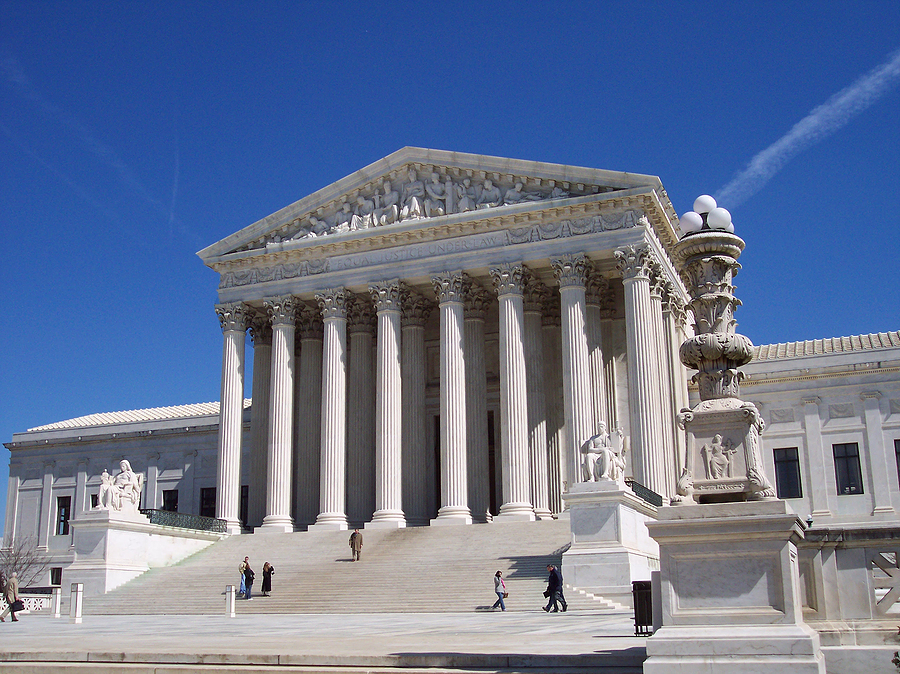The year 2010 was an important one for employment-related class action litigation and 2011 could see even more far-reaching judgments and changes to class action law.
The value of employment discrimination class action settlements increased four-fold in 2010 over 2009 and the top 10 settlements of wage and hour, ERISA, and governmental enforcement class actions increased to $1.16 billion, the highest amount ever, according to the Chicago law firm Seyfarth Shaw’s Workplace Class Action Litigation Report.
The new year is also looking like it will be an important one for employment cases.
“The past several years have placed several important issues governing class action law on the table and 2011 looks like the year many of these questions will be answered by the Supreme Court,” said Gerald L. Maatman, Jr., co-chair of Seyfarth Shaw’s class action defense group, who authors the annual report on workplace litigation.
“Wage and hour cases in particular have yet to slow down, even as the economy is starting to improve,” Maatman said. “For most companies that is their number 1 exposure – and we expect to see even more and bigger cases brought in 2011.”
Maatman’s analysis about the rise in wage and hour cases is in line with a report from Advisen Inc., which also found that insurance coverage for these suits can be hard to find. Insurance companies have shied away from providing coverage largely because wage and hour lawsuits have been viewed as the the result of intentional acts rather than fortuitous events. Recently, some insurers have begun offering coverage for the costs of defending these suits, and at least two insurers have introduced policies that respond to settlements.
Supreme Court Docket
According to Maatman, U.S. Supreme Court’s rulings in three cases in particular could have profound effects on the way class actions are brought against companies, including wage and hour class actions and collective actions.
In its current term, the U.S. Supreme Court has three cases that may bring substantial changes to class action law.
- In March the Supreme Court will hear oral arguments in the Title VII gender discrimination case Dukes v. Wal-Mart, covering more than 1.5 million class members.
- In AT&T Mobility v. Concepcion, argued in November of 2010, the Supreme Court must resolve whether service agreements favoring non-class-wide arbitration abrogate consumers’ right to bring a class arbitration – the outcome could well impact workplace arbitration agreements.
- In Smith v. Bayer, scheduled for argument later this month, the justices must determine how far one court’s rejection of class certification can go in determining another court’s capacity to certify a class on the same issue.
Maatman, who represents companies facing labor and employment-related class actions, won several key workplace class action decisions in 2010, including a gender discrimination class action that was the first case testing the U.S. Supreme Court’s ruling regarding arbitration clauses in Stolt-Nielsen v. Animalfeeds.
The latest edition of the Workplace Class Action Litigation Report cites a number of key trends Maatman says are certain to have carry-over effect into the year ahead:
- Successful cases brought by plaintiffs’ class action lawyers are likely to inspire copycat filings as well as drive up settlement demands by those bringing workplace actions, especially in the wake of the $253 million discrimination judgment against Novartis, the largest employment class action trial verdict on record. The case not only increased awareness of the class action option among employees but also broadened the appeal of class actions among the plaintiffs bar.
- The Supreme Court’s grant of certiorari in Dukes v. Wal-Mart in December sets the stage for a potentially landmark decision regarding Rule 23 of the Federal Rules of Civil Procedure, which governs the standards and parameters for constituting a class and its claims. The Ninth Circuit’s en banc ruling to certify the 1.5 million-person class in Dukes, the largest employment discrimination class ever. Among the issues the Supreme Court will decide is the extent of commonality that must hold among plaintiffs’ grievances for a class to be certified.
- The economic downturn and resulting layoffs sparked a major jump in FLSA (Fair Labor Standards Act) collective actions for unpaid overtime wages. Wage & hour cases remain the most common form of workplace class action. (Chapter 5 of the Report analyzes key FLSA decisions from 2010, while the most significant state-level wage & hour rulings are addressed in chapter 7.)
- Setbacks to the Democrats’ legislative agenda in the November mid-term elections will likely place greater emphasis by the Obama Administration on regulatory means of enforcement. Increased budgets and renewed hiring at the Department of Labor and Equal Employment Opportunity Commission suggest that employers should prepare themselves for more investigations and lawsuits in the coming year – a trend at the federal level that state labor departments have already begun to follow.
- The latest EEOC annual report asserts that its goal is to shift emphasis from smaller suits on behalf of individuals to systemic “pattern or practice” lawsuits encompassing much larger groups of workers.
- The Bush Administration’s Class Action Fairness Act, designed to tighten access to state courts in filing class actions, has prompted a surprisingly large number of decisions, driven by the high volume of wage and hour filings in California. Moreover, CAFA rulings have triggered new litigation strategies by both plaintiffs’ and defense class action attorneys, making class action law one of the most quickly evolving areas of jurisprudence.
Maatman says the sluggish economy also will continue to generate employment-related class actions.
“The current trend – which might or might not be diverted or arrested by upcoming Supreme Court decisions – is toward a more aggressive plaintiffs’ bar and government enforcement philosophy, which combine to dramatically increase the financial exposure companies face,” Maatman said. “Clearly, the dominant lesson of 2010 is that shoring up potential weaknesses in compliance and identifying class action vulnerabilities should remain a priority for corporate counsel.”
Seyfarth Shaw has more than 750 attorneys in 10 offices throughout the United States.
Was this article valuable?
Here are more articles you may enjoy.



 Progressive to Pay $48M to New York Drivers Over Underpaid Total Loss Claims
Progressive to Pay $48M to New York Drivers Over Underpaid Total Loss Claims  Home Insurance at $10,000 a Year Shows California Buyers’ Pain
Home Insurance at $10,000 a Year Shows California Buyers’ Pain  Insurer Can’t Rescind Workers’ Comp Policy, Even With Misrep, MS High Court Says
Insurer Can’t Rescind Workers’ Comp Policy, Even With Misrep, MS High Court Says  State Farm Seeking Large Rate Increases in Wildfire-Prone California
State Farm Seeking Large Rate Increases in Wildfire-Prone California 

